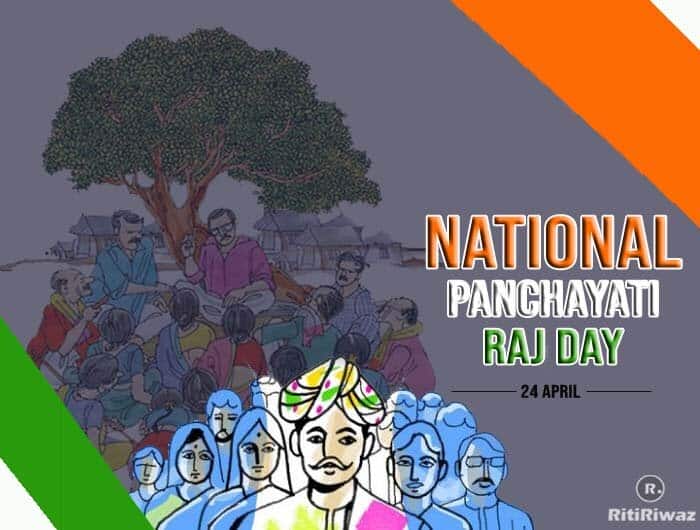National Panchayati Raj Day – 24 April

National Panchayati Raj Day (National Local Self-Government day) is celebrated on 24th April every year in India. It was declared by Manmohan Singh the then Prime Minister of India on 24th April 2010. The day is observed to mark the passing of the Constitution (73rd Amendment) Act, 1992 that came into force with effect from 24 April 1993.
This amendment had led to a defining moment in the history of India which helped in the decentralization of political power to the grassroots level. In turn, it had led to the institutionalization of Panchayati Raj (PR) through the village, Intermediate, and District level Panchayats.
Panchayati Raj Institution (PRI) was constitutionalized through the 73rd Constitutional Amendment Act, to build democracy at the grassroots level and was entrusted with the task of rural development in the country. It has been drafted under Article 40 of the Constitution, Directive Principle of Policy according to which the goal of establishing Panchayati Raj has been stated. After the President’s approval on 20 April 1993, it was enacted as Panchayati Raj Act on 24 April 1993 across India.
What is Panchayati Raj
Panchayati Raj is the oldest form of local government. The word ‘Panchayat’ is formed by two words ‘Panch’ which means five and ‘Ayat’ which means assemble whereas the word ‘Raj’ means the rule. Each village has a head who represents the entire village, who in earlier times used to be the richest person of the village, whom the villagers believed in.
He was chosen without an election in earlier times, but now there are elections held for villagers to choose the village head. Through voting, the villagers choose their representatives. The village head chosen should work together for the benefit and development of the village. Mahatma Gandhi also advocated panchayats and village republics. Since independence, several provisions for panchayats have been made in India from time to time.
Election of Panchayats
All the members of Panchayats at the village, intermediate, and district levels shall be elected directly by the people.
Chairperson of Panchayat at the village level shall be elected in such manner as the state legislature determines.
However, the chairperson at the intermediate and district levels shall be elected indirectly; by and from amongst the elected members thereof.
Important things related to the Panchayati Raj system
-
The Narasimha Rao government introduced the Constitution Amendment Bill to the Lok Sabha in September 1991 to give constitutional status to Panchayati raj institutions.
-
It was passed by the Lok Sabha on December 22, 1992, and by the Council of State on December 23, 1992. Later the assemblies of 17 states also passed.
-
With the approval of the President on 20 April 1993, it came into force on 24 April under the Panchayati Raj Act of India.
-
The Panchayati Raj system consists of villages, taluks, and districts.
-
The Panchayati Raj system was first introduced by the then Prime Minister Jawaharlal Nehru on 02 October 1959 at Bagri village in Nagaur district, Rajasthan.
-
The Panchayati Raj system has been in existence in India since ancient times.
-
Article 40 of the Constitution of India directs the states to constitute panchayats.
-
Panchayati Raj Institutions have been given constitutional recognition under the 73rd Constitution Amendment Act, 1992 in the 1991 Constitution.
-
The 73rd Constitutional Amendment Act added a new chapter 9 and 11th schedule to the Indian Constitution.
-
Article 40 of the Constitution of India directs the states to constitute panchayats.
-
Rajasthan was the first state to establish the institution of Panchayati Raj in Nagaur District in 1959. Rajasthan was followed by Andhra Pradesh.
-
Panchayats have a fixed tenure of Five-year.
-
In case the panchayat is dissolved before its term of 5 years, fresh elections must be held within six months.
Every year on the National Panchayati Raj Day Union Ministry of Panchayati Raj organizes National Conference and awards best performing Gram Panchayats with ‘The Panchayat Shashakatikaran Puraskar and Rashtriya Gaurav Gram Sabha Puraskar’.
Suggested Read: Civil Services Day






